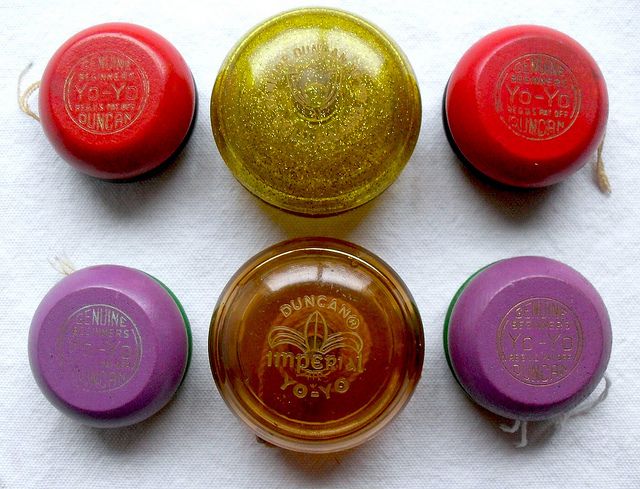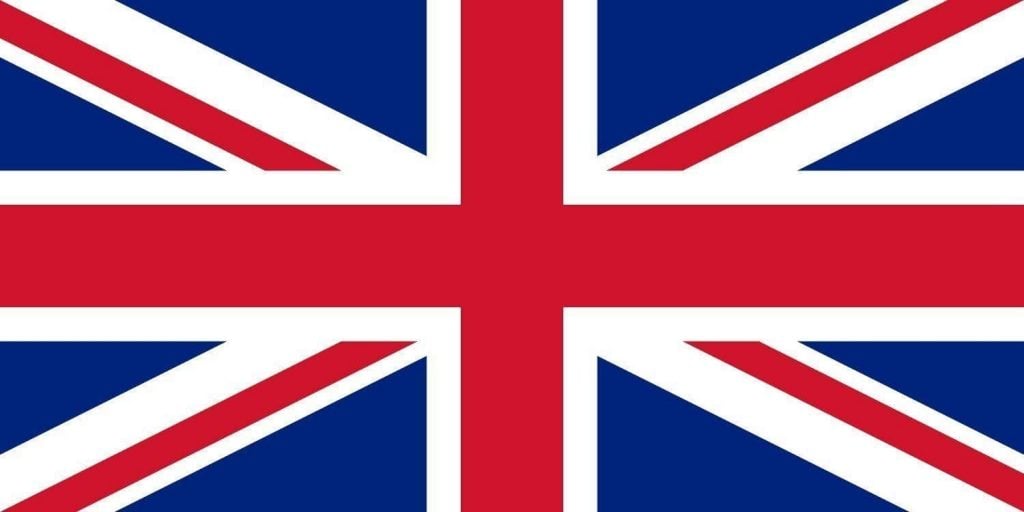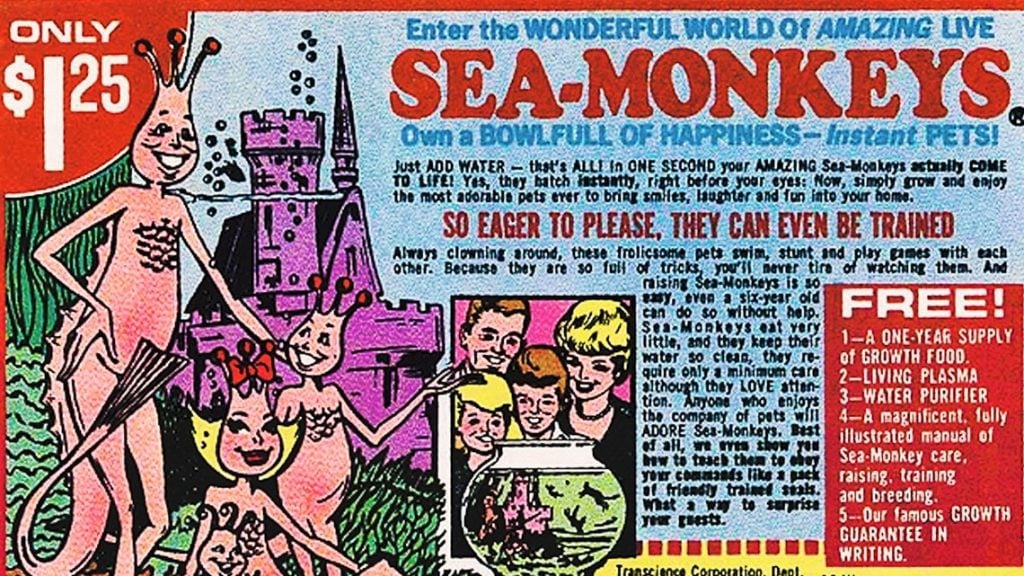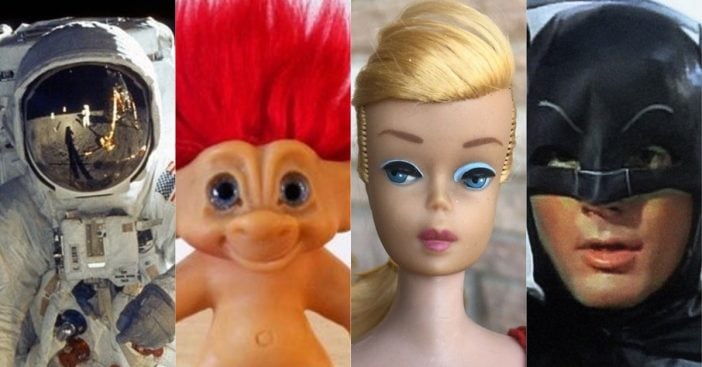
UPDATED 4/15/2024
Fads by their very nature are short-lived. They usually come out of nowhere, have a collective impact on people who become nearly obsessed with whatever it may be and then — almost in what feels like a hive mind — simultaneously come to the conclusion that they’ve had enough, and abandon it. Fashion, hairstyles, toys, television shows and music in the form of one-hit wonders, or, instead, the seemingly pre-ordained journey of boy bands with one becoming a sensation, losing popularity and instantly being replaced by another, are all part of the endless cycle of fads as you’ll in these 30 fads of the 1960s.
In the 1950s there were sock hops, conical bras, drive-in theaters, coonskin caps (courtesy of Davy Crocket), hula hoops, 3D movies, The Mickey Mouse Club, bubble gum cigars(!), frisbees and Pez (the candy dispenser with a cartoon character as a head). Jump ahead to the 1970s, and you’re talking about afros, roller skates, pet rocks, disco, mood rings, CB radios and waterbeds. Needless to say — not that that’s ever stopped us from doing so — each decade generates its own unique fads, and that’s especially true of the 1960s.The ’60s was an era of tremendous change in society and when it came to fads … well, many of them were certainly unique to that period. What follows is a look at 30 fads of the 1960s.
RELATED: Kids From the 1960s Share Predictions for the Year 2000
1. 8-Track Tapes
Back in the ’60s this was going to elevate recorded music, becoming the ultimate delivery system. If anyone remembers Betamax, you’ve got a pretty good idea how things worked out. Created in 1964, the idea was that the old stereo/two-channel sound was replaced by four-channel sound. Well, however many channels there were, the cassette tape — which was there before it — jumped ahead of the 8-track in popularity and the format became obsolete. There were some glory years, however, with Ford equipping their 1966 and 1967 models with 8-Track players and people having players in their homes and portable formats. But, by the mid-70s, the love affair was over. Interestingly, No. 1 of our 30 fads of the 1960s has enjoyed a bit of nostalgic resurgence in recent years.

2. Barbie Dolls
Maybe it’s unfair to inclue this line of dolls from Mattel as a part of 30 fads of the 1960s, given that it’s been around for 65 years and still going strong (like the $1 billion+ grossing movie version in 2023). Barbie was introduced in 1959, but exploded throughout the 1960s. The concept came from Ruth Handler, who had watched her daughter Barbara (hey …. we’re starting to suspect where the line’s name came from ) play with paper dolls and that she frequently gave them adult roles to play in games of make believe. Inspired, she went to the co-founder of Mattel, who also happened to be her husband, and suggested the idea of an adult-bodied doll. Initially he didn’t take to the notion, but ultimately went along with it and was stunned by its success. There was some controversy along the way: it seems not all of the parents out there were comfortable with the fact that, unlike all the other dolls on the market, Barbie had breasts. The doll would evolve over the years with many additional outfits and accessories and even a boyfriend in the form of Ken, all of which has provided playtime for one generation after another.
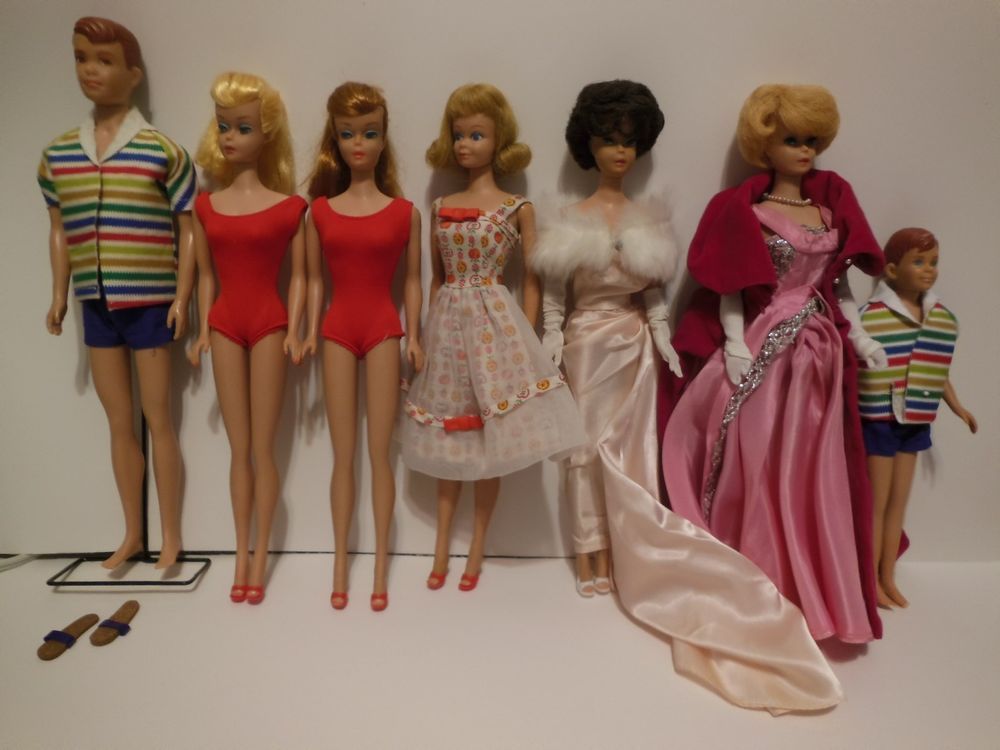
3. ‘Batman’ TV Series
Aired on ABC twice a week from 1966 to 1968, this camp version of Batman — which personally scores highly on the list of 30 fads of the 1960s — stars Adam West in the title role along with Burt Ward as Robin and Yvonne Craig as Batgirl. There was also an incredible array of villains, including Cesar Romero as the Joker, Frank Gorshin as the Riddler, Julie Newmar as Catwoman and Burgess Meredith as the Penguin. This show was a sensation right from out of the gate – or Batcave — getting so big, so fast, that the audience burned out on it pretty quickly. It basically limped through its third and final season, but there are a lot of people who look back on it fondly.
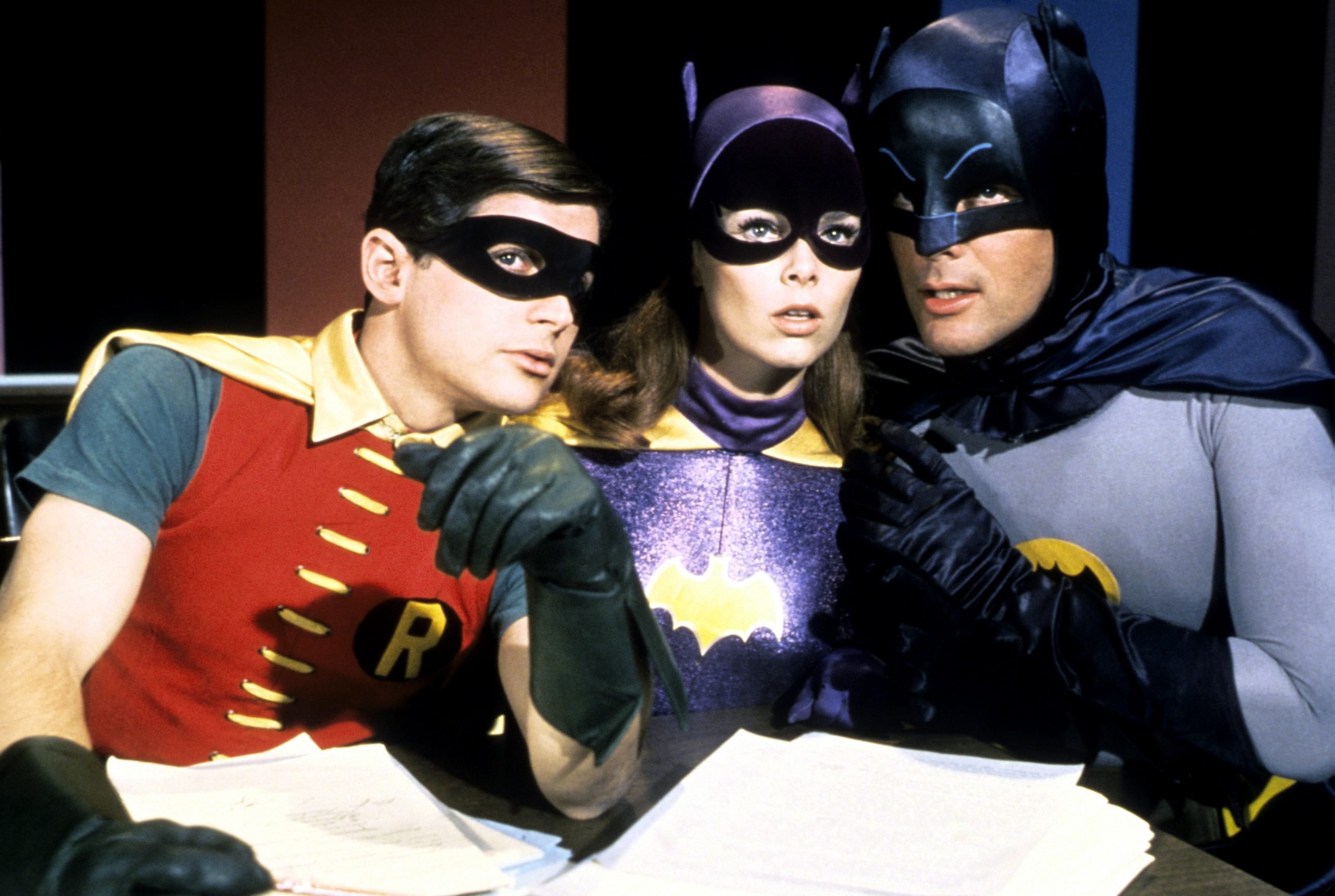
4. Bean Bag Chair
Three Italian designers introduced the concept of the “Sacco” (aka Bean) Bag Chair in 1968 and appealed to consumers based on the fact that it was reasonably priced and was considered to be an anatomic chair in that it would more or less take the shape of the object — even if that object was a butt — plopping down on it. The original intended audience was the non-conformist households of hippies who would embrace the fact it was so different from the norm. The audience grew from there.
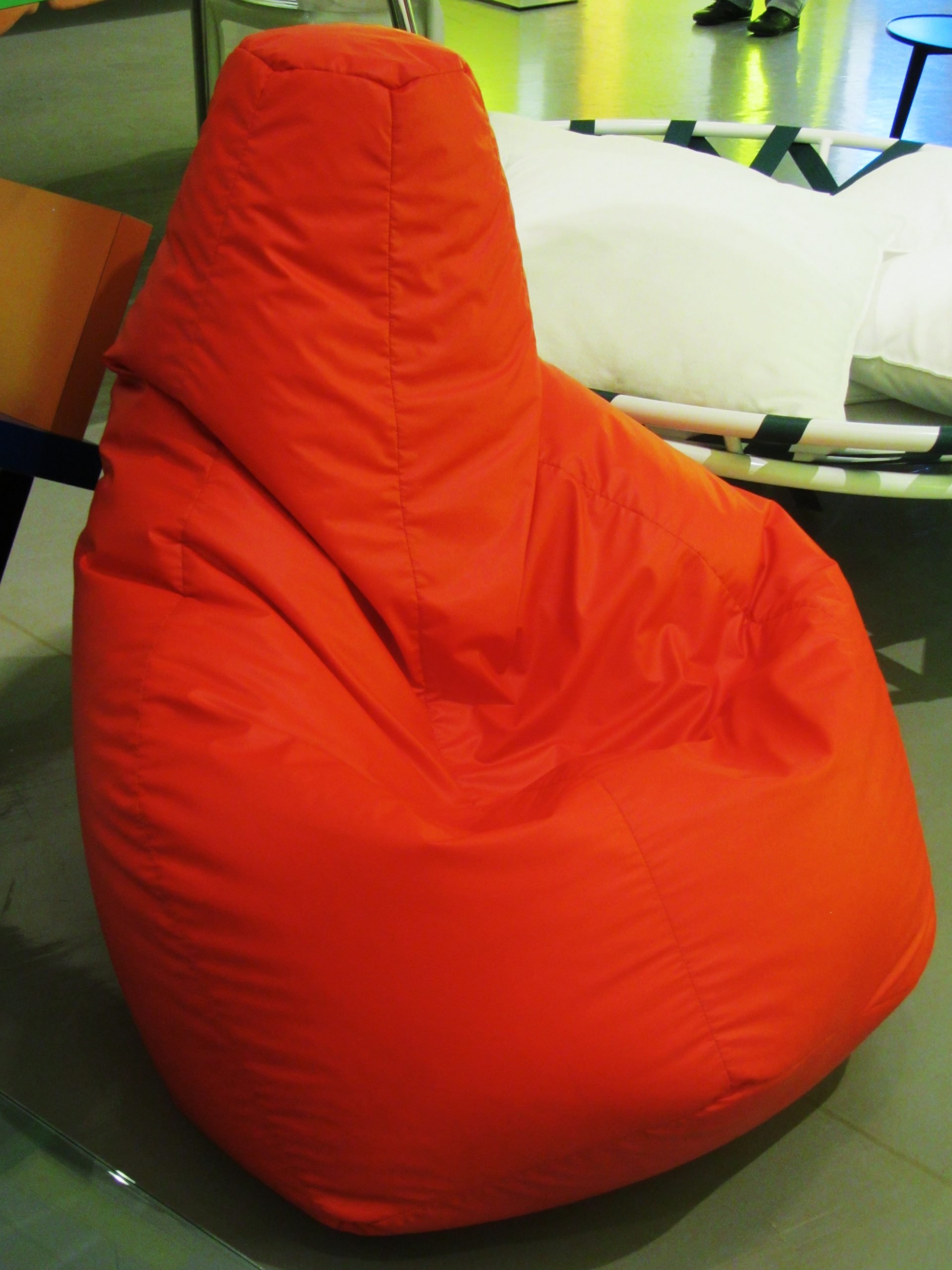
5. The Beatles
There’s no question that The Beatles and their music remain a part of society to this day (over 50 years since they disbanded), but back in the 1960s their arrival was insane and the response was known as Beatlemania. But it wasn’t just John, Paul, George and Ringo, it was everything about them. Their moptop style inspired kids to either cut their hair the same way or buy Beatle Wigs; their ankle-high boots (known simply as “Beatle Boots”) became all the rage, and then there were the collarless jackets that they wore for a time, which inspired many people to do the same. Their impact on music and society is incalculable — and we happen to believe we’re the better for it. Yeah, yeah, yeah!
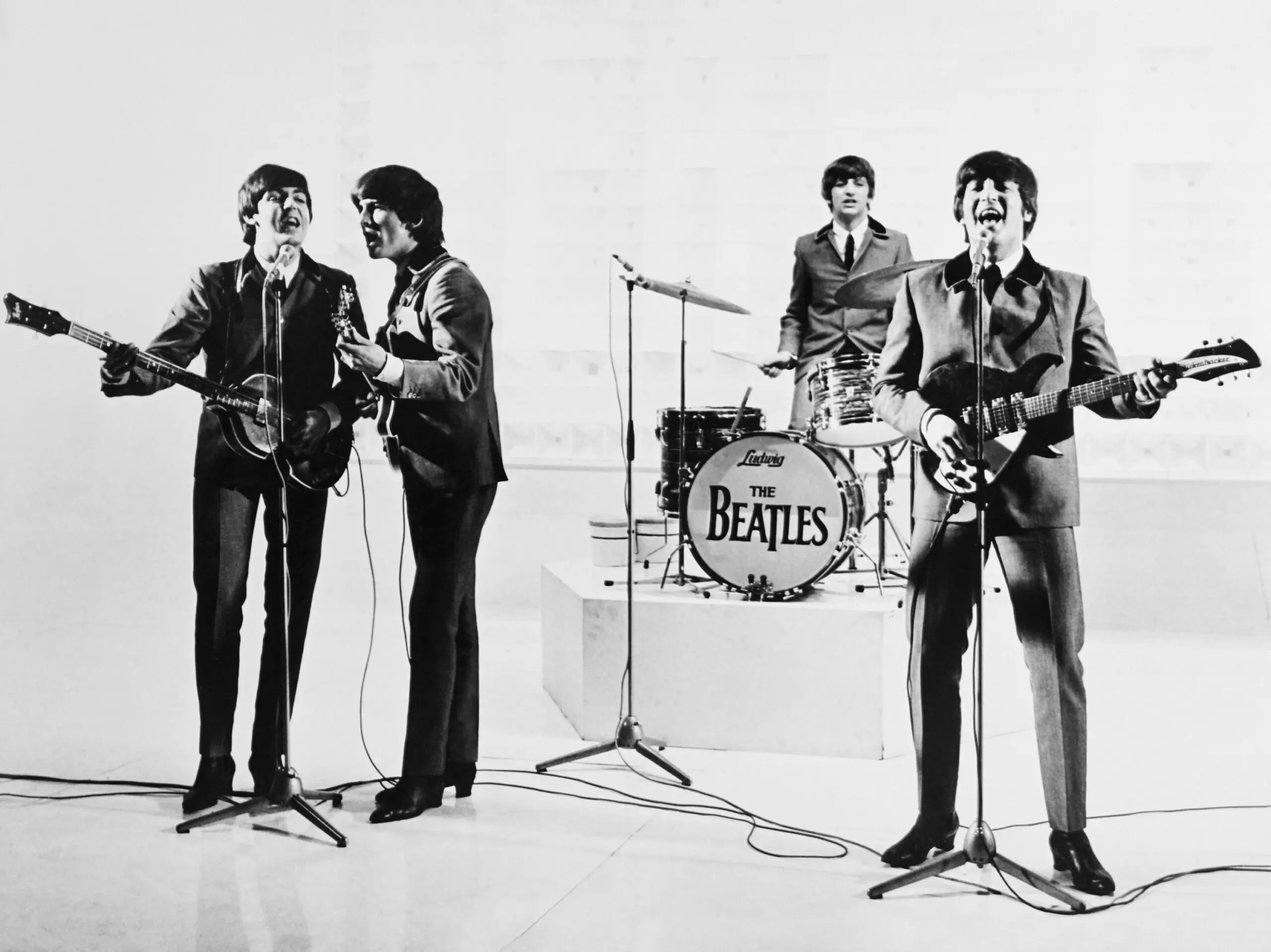
6. Bell-Bottoms
Men and women took to bell-bottom pants in the 1960s and into the ’70s (the latter helped along by the fact it was the style of then-married couple Sonny and Cher). More often than not, they were made of denim, though there was plenty of other material out there as well — and all of them had the legs flare out from the bottom of the calf. The hems were slightly curved with an 18-inch circumference and were worn with Chelsea boots, clogs or Cuban-heeled shoes. Bell-bottoms have actually been around since the early 19th Century and, prior to a specific uniform being assigned, sailors in the U.S. Navy had their pants legs flared in the same way.
7. Black Light Posters
Okay, this one is a two-pronged fad in that you had to start with a black light itself, which is a lamp that gives off very little visible light, working on the ultraviolet level. Although utilized in diagnostics and therapeutics, they were also used for the detection of counterfeit money, and locating leaks involving refrigerators and air conditioners. But on the home front, its use was far more entertaining: allowing posters that had been printed with special inks that, when exposed to ultraviolet light, caused them to glow. In the 1960s, between widespread use of hallucinogenics and, arguably, The Beatles’ album Sgt. Pepper’s Lonely Hearts Club Band, people really got into their glowing posters. The video below highlights some examples of black light posters.

8. The British Invasion
Between The Beatles and James Bond, in the 1960s America fell in love with all things British. On the music front, it was an invasion: the Fab Four were followed by the likes of the Rolling Stones, the Who, the Kinks, the Dave Clark Five, Herman’s Hermits, The Swinging Blue Jeans, the Animals and The Hollies — which would cumulatively affect the American music business and sound. British actors like Michael Caine, Peter Sellers and Peter O’Toole became even more popular here, American television began airing Roger Moore’s The Saint, the spy series The Avengers and Danger Man (aired here as Secret Agent). Fashions focused on the British “mod” style. By the end of the ’60s, things were gradually slipping away as American music, fashion, etc. began to regain prominence. As far as invasions go, this one wasn’t half bad.
9. Chatty Cathy
Ruth and Elliot Handler from Mattel were at it again, having started to conquer the world with Barbie. This time it was a doll designed to look like a five-year-old girl who had 11 phrases to share with you when you pulled the string attached to its back. Chatty was a star of TV commercials beginning in 1960 and was the second best-selling doll of the decade behind Barbie, inspiring a number of spin-offs and even a black version issued in the early ’60s.

10. Communes
In general, a commune is essentially a gathering of like-minded individuals who decide to live together, oftentimes for a common goal. The sixties being what they were, in that decade it became about sharing possessions, income and each other (if you get what we mean). Frequently, the people in these communes had more or less dropped out of society and had nowhere else to go.
11. ‘Dark Shadows’
It was a soap opera that ran from 1966 to 1971, and it evolved from a Gothic romance mystery novel to a tale of vampires, werewolves and witches beginning with the introduction of Jonathan Frid as vampire Barnabas Collins. The longer Barnabas stayed around, the most sympathetic they painted him, which in turn led the audience to fall more in love with him. While there were 1,225 episodes and two feature films produced, this one burned out much faster than other soap operas which were designed to last many years. There’s never been another show quite like Dark Shadows, which is currently airing on the Decades TV network and available on Amazon Prime, and for a time its presence was everywhere.
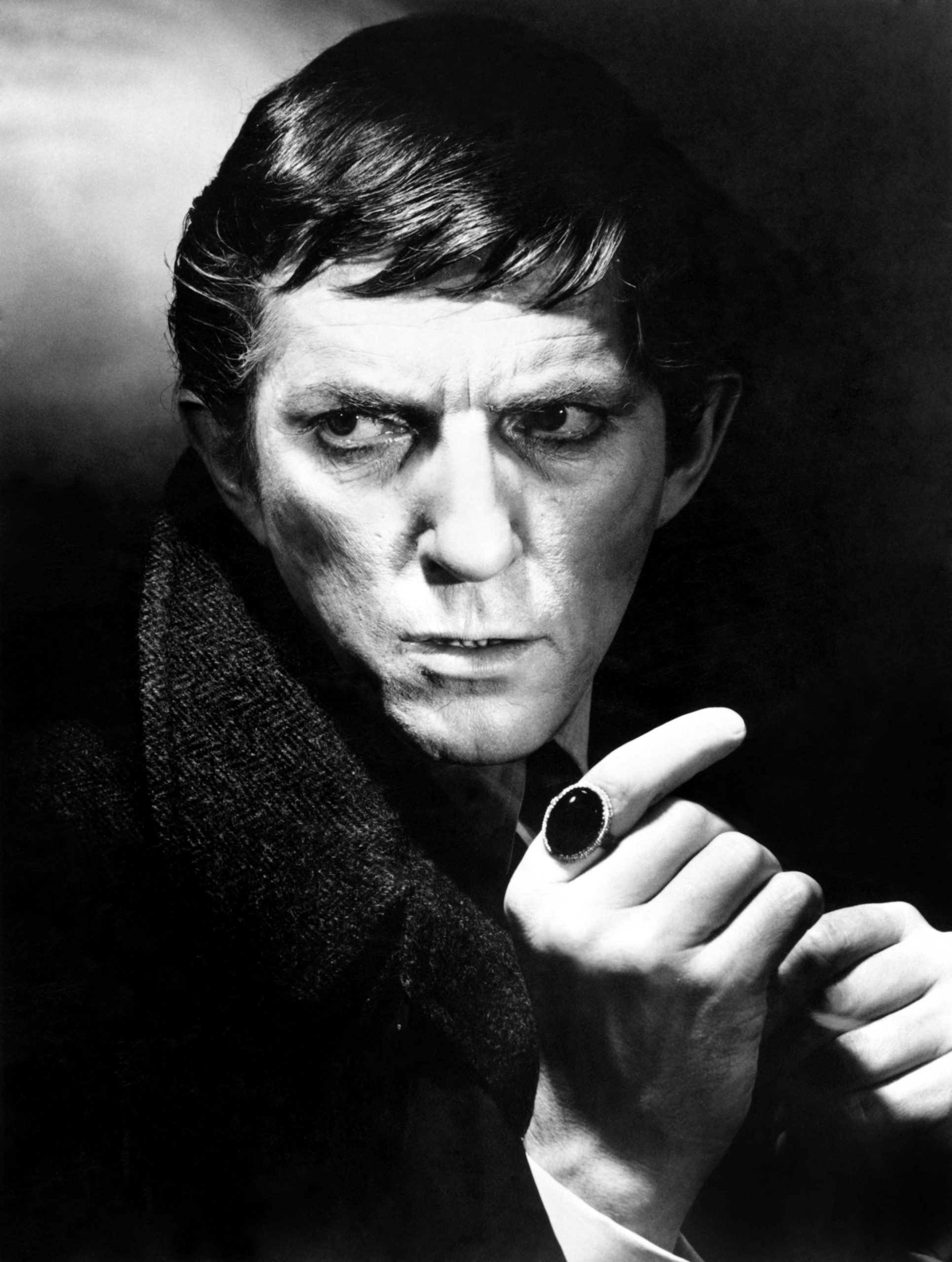
12. Easy-Bake Oven
Kenner introduced the Easy-Bake Oven in 1963, and it was an instant hit. An actual working oven (on a smaller scale, of course), it used a pair of lightbulbs as a heating source that would take a combination of cake mix and water and bake it (though we can’t vouch for whether or not they actually tasted anything like cake). In its first year of production, it sold half-a-million units. Although Kenner was purchased by Hasbro, the Easy-Bake Oven has continued to be produced in different forms, but back then it was quite the innovation.
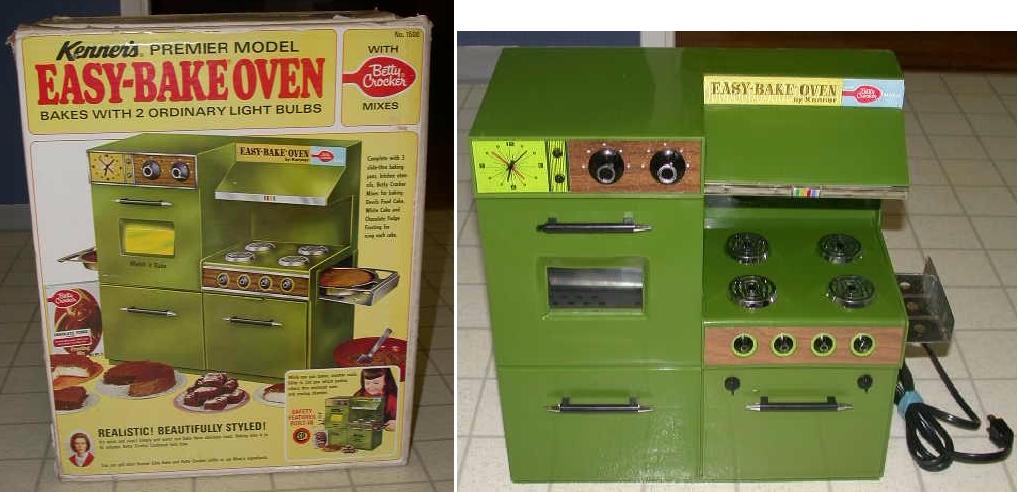
13. Flower Power
While the Vietnam War was raging with the younger generation protesting it, one intriguing example of pushing back came in the form of what was known as passive resistance. The image below perfectly captures the essence of this as a demonstrator offers up a flower to military police in 1967, after the group had marched from the Lincoln Memorial to the Pentagon. Eventually the concept of Flower Power became analogous to the Hippie movement.
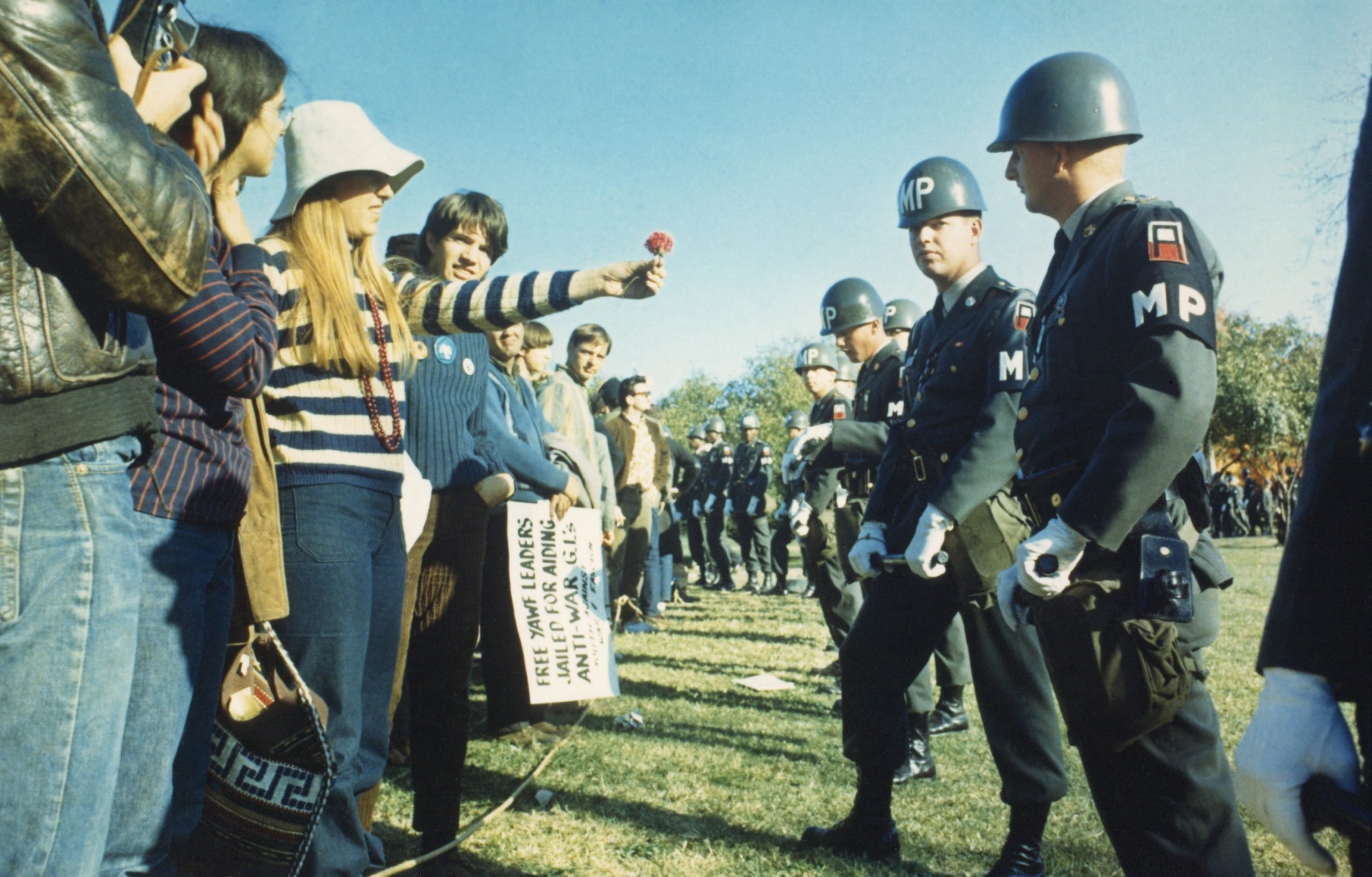
14. Go-Go Boots
The go-go boot was created by French fashion designer Andre Courreges in 1964, and as conceived came up about mid-calf in height, was low-heeled and white. Over the next couple of years it quickly began to evolve to a square-toed boot with block heel that was about knee-high. Sales were helped by Frank Sinatra’s daughter, Nancy, who wore them on television when she sang her hit song “These Boots Are Made for Walkin.'” The go-go boot came back into style in the 1990s when ’60s nostalgia ruled the day.
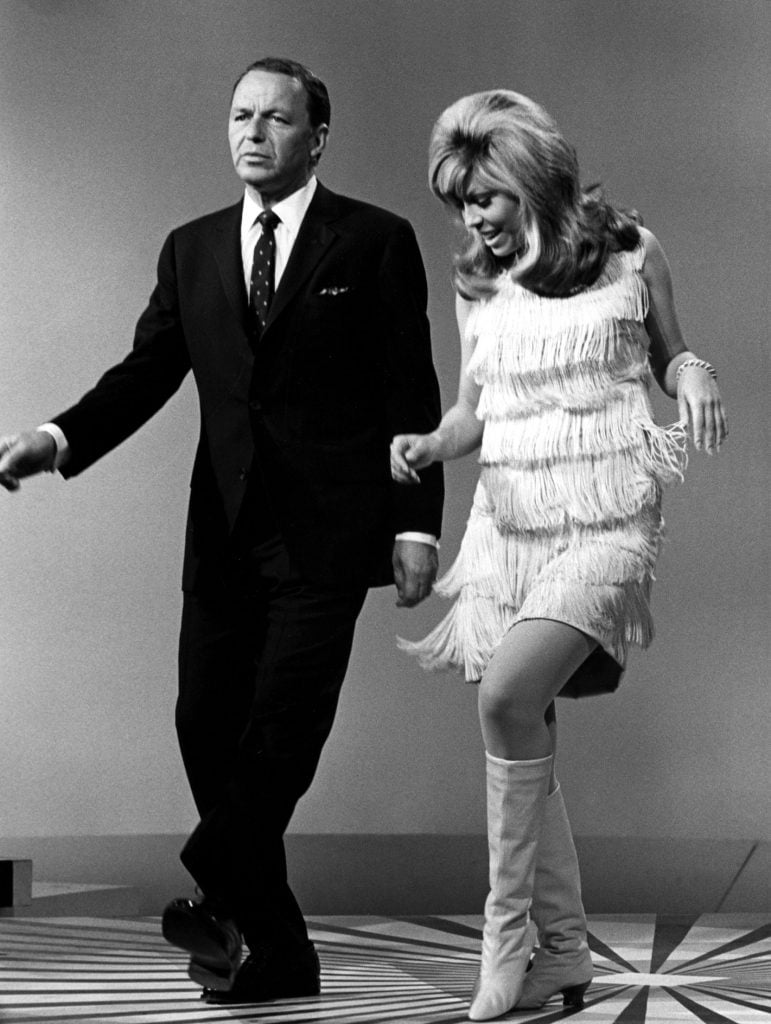
15. Lava Lamps
Obviously Terence Howard is as fascinated with lava lamps as we are. Edward Craven Walker, the founder of the Mathmos lighting company, invented the lava lamp in 1963. Its container is filled with clear liquid and wax of different colors. As the heat increases, the wax melts, causing it to float upwards until it cools and starts descending again before the process starts anew — hence the endless fascination (particularly if you’ve partaken in the drugs of the time. They may not be as widespread as they once were, but lava lamps remain a steady seller.
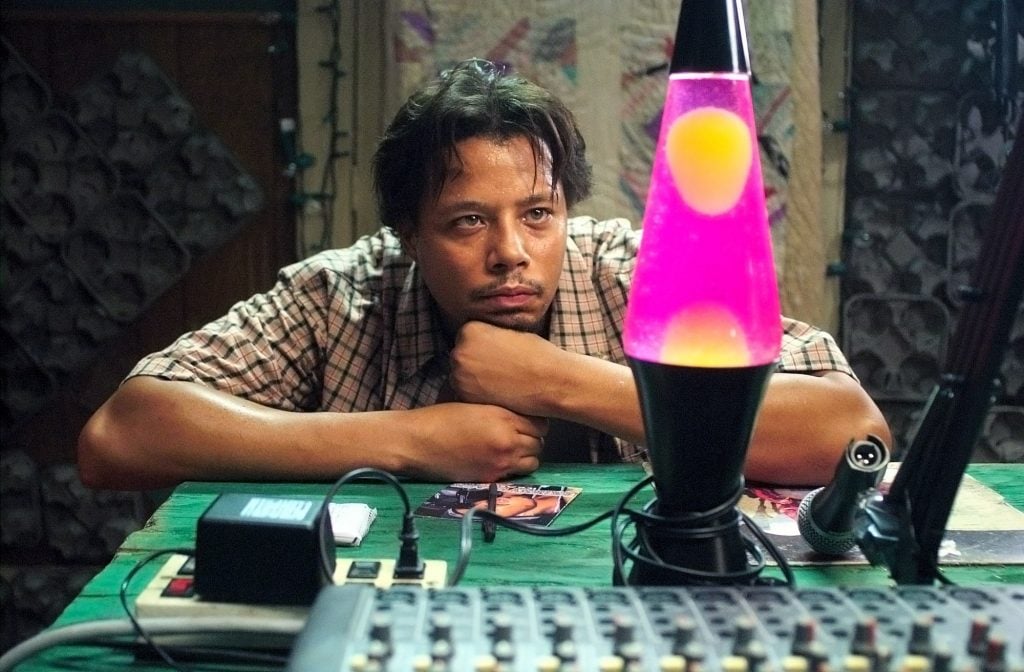
16. Love Beads
Likely influenced by people from Native America, Africa and India, the hippie culture — both male and female — adopted love beads as an accessory. Usually they’re made up of one or more stings of beads that more often than not are likely to be hand made. Our “model” for those beads is actor Peter Sellers, best known for playing Inspector Clouseau in the Pink Panther film series, seen here in I Love You, Alice B. Toklas (1968).
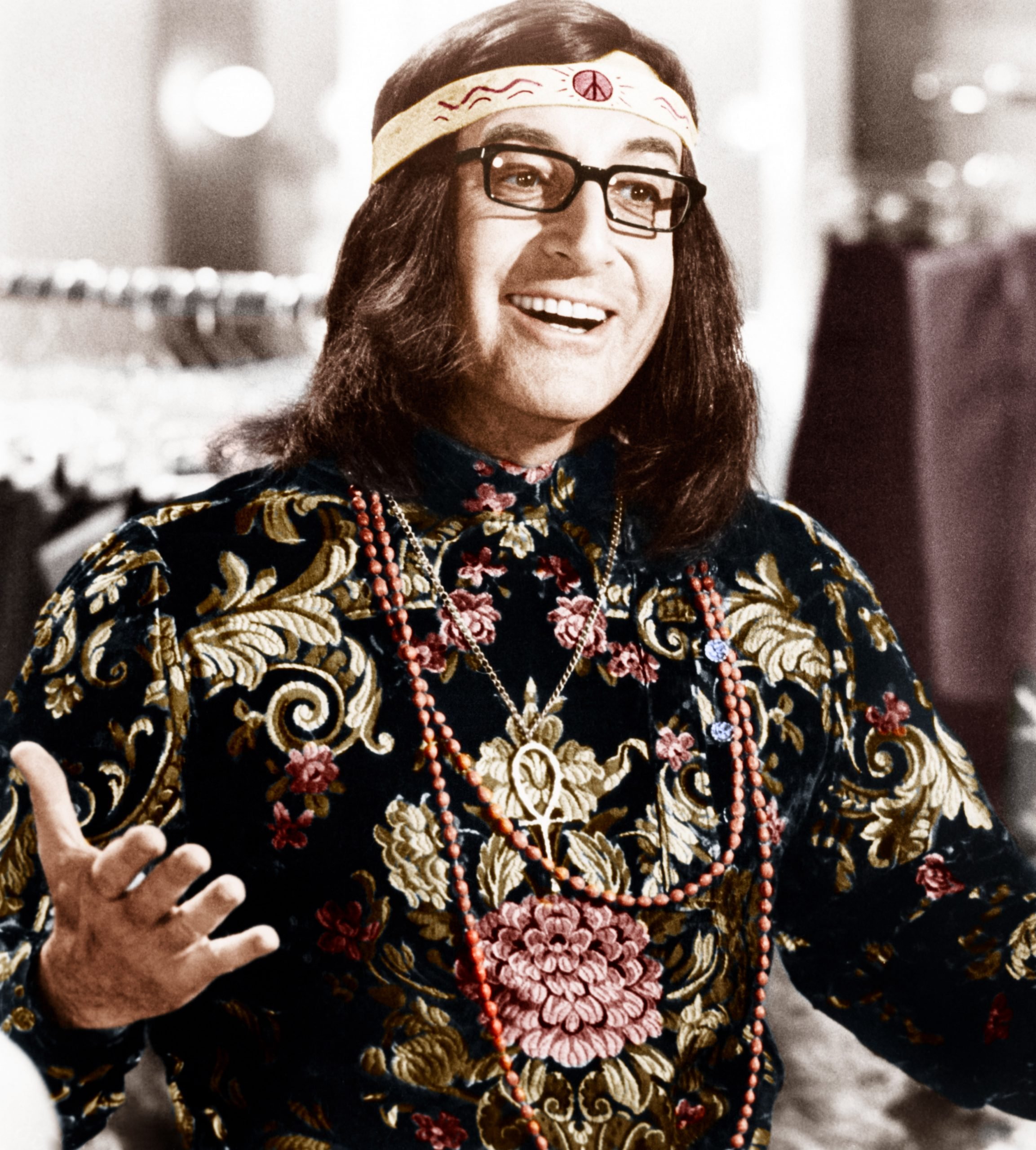
17. LSD Usage
The 1960s were about a lot of things, and drugs were a major part of it all. One of the most popular was LSD, aka lysergic acid diethylamide or simply acid. Give it any title you like, but the bottom line is that it’s a hallucinogenic that apparently unlocked all sorts of creativity in artists of various vocations and allowed people to experience the universe in a whole different way.
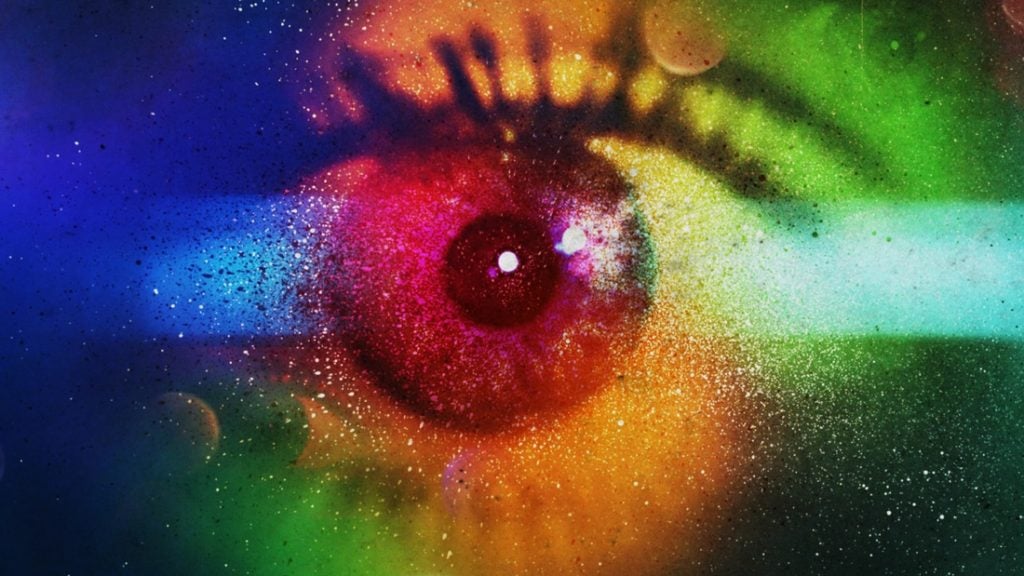
18. Miniskirts
Would it be sexist to say that the miniskirt was a lovely gift bestowed upon ’60s society? Oops, our bad. You can find women in miniskirts in illustrations for science fiction stories in the 1940s. By 1961, hemlines were above the knee, and as society changed and the youth exerted itself for the first time, the hemline continued to inch upwards to the point where it would be about four inches from the derriere. The miniskirt was a big part of London of the era, and gradually swept over here as well. (Oh, and that’s Jane Fonda in the film Klute below)
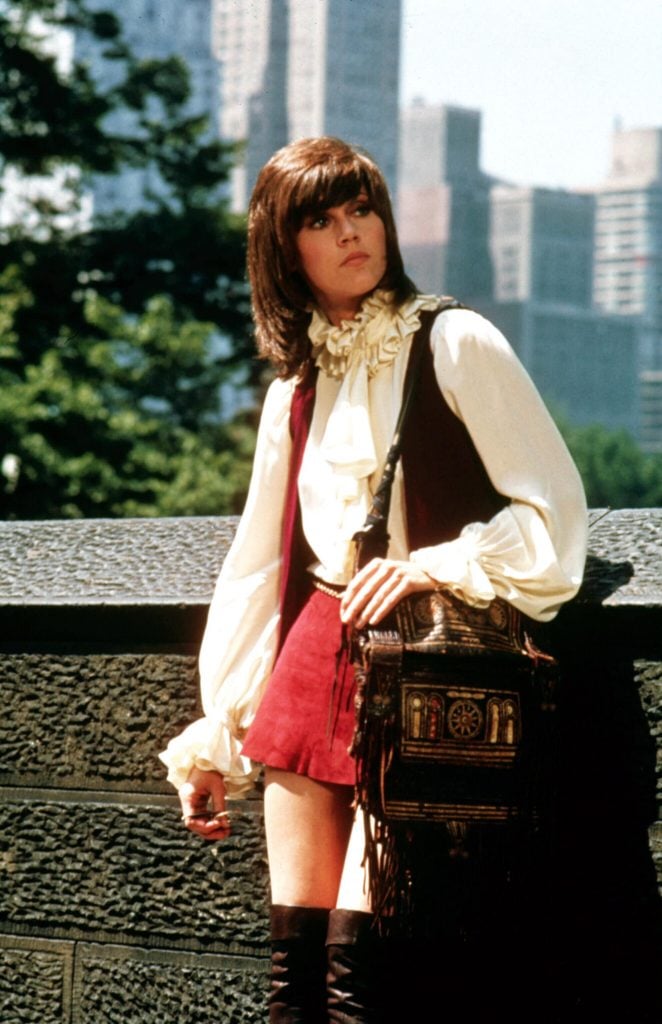
19. NASA/THE SPACE PROGRAM
In the 1960s space was definitely the place, beginning with President Kennedy, in response to the Russians launching the Sputnik space capsule, proclaiming that America would have a man on the moon by the end of the decade. Getting there fueled the imagination of several generations who watched as things progressed. People — especially kids, who couldn’t wait to grow up to become astronauts — were obsessed. And, sure enough, we made it to the lunar surface on July 21, 1969 … and then over the next decade the public’s fascination with the space program began to fade away. One could ask, where do you go once you’ve reached the moon? Still, it was wonderful seeing how enthusiastic people were regarding those modern day heroes, the astronauts.
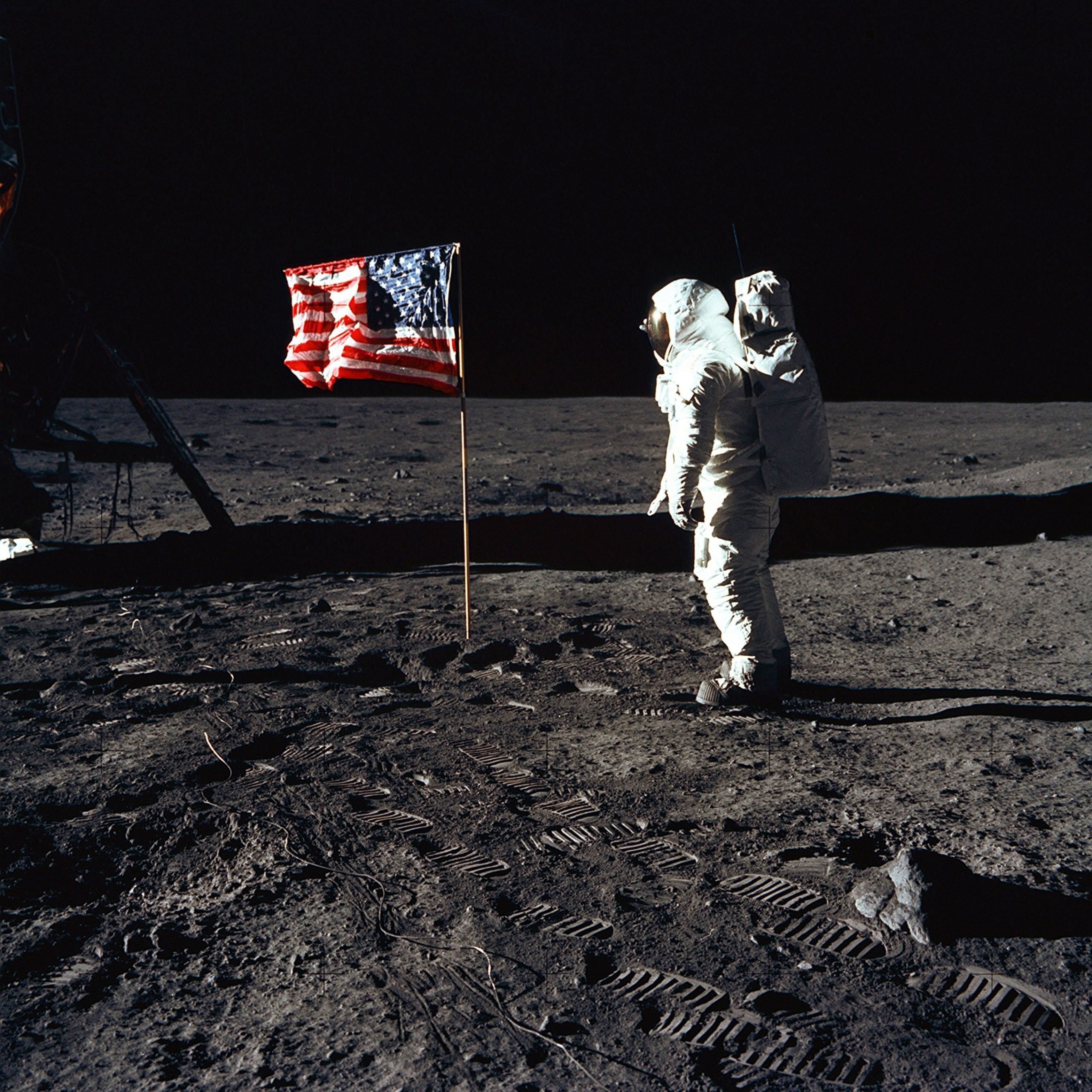
20. Ouija Boards
30 Fads of the 1960s: You want messages from the dead? Well, just take out your Ouija Board and give it a shot as you lightly place your hands on the plastic thingamajig and watch as it gradually moves across the board to reveal all — unless you’re actually doing it yourself (say it ain’t so!). An earlier form of the Ouija Board came into existence in 1886 and continued to change as the decades went on. The 1960s were a particular high point for it in terms of popularity, though fascination continues to the present.
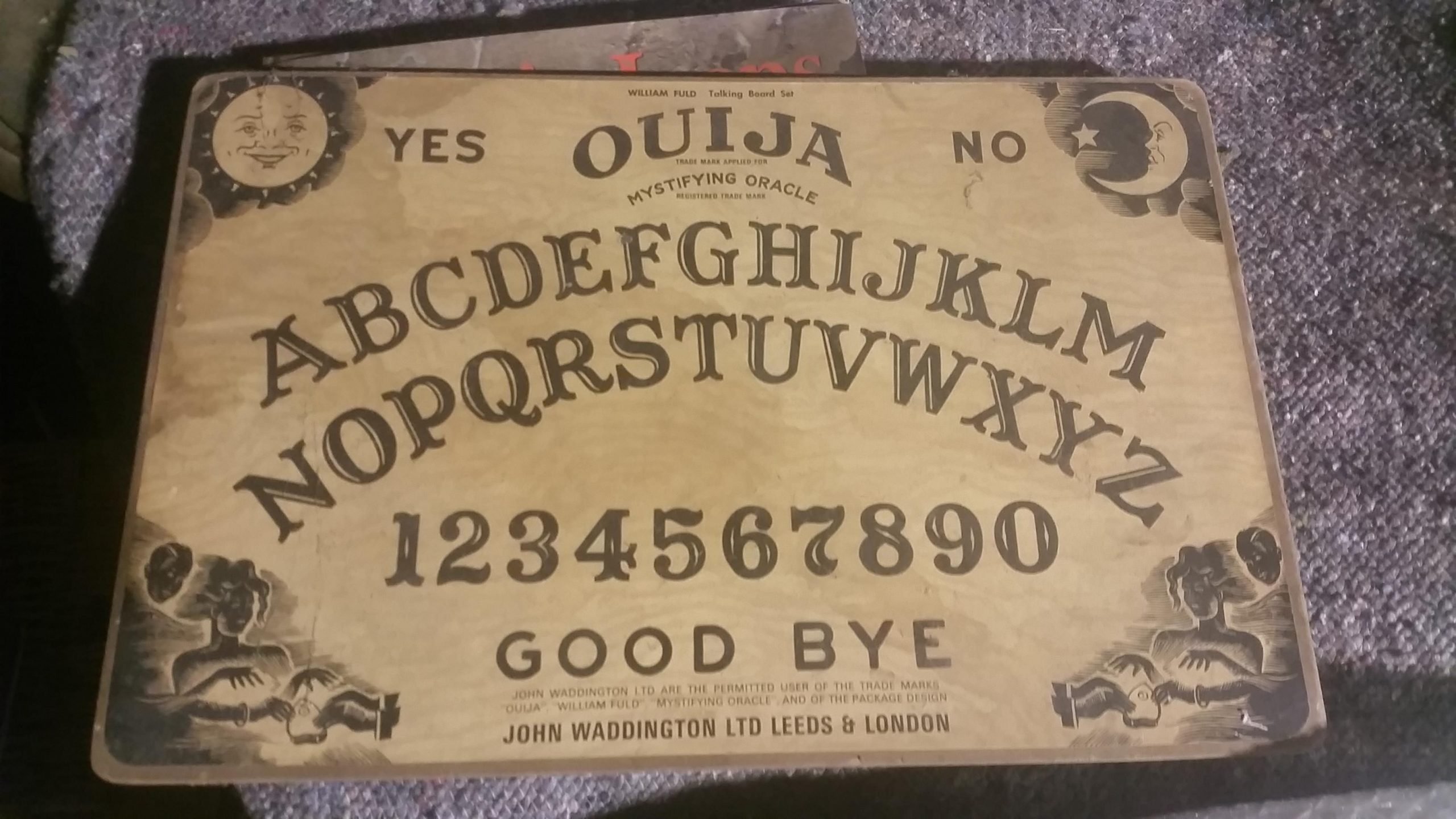
21. Peace Symbol
30 Fads of the 1960s: Interestingly, this image was created by British artist and designer Gerald Holtom, who, in the 1950s, came up with the design for what would be symbol for Britain’s Campaign for Nuclear Disarmament. Due to the fact that ithad not been copyrighted or trademarked, others began to utilize it, usually for peaceful purposes. Thousands of buttons adorned with the symbol were sold on college campuses in the United States, and by 1968 it had become the symbol of the peace movement. And it is so quintessentially ’60s that you can’t help but think of that decade whenever seeing it.

22. Sea Monkeys
30 Fads of the 1960s: As a kid in the 1960s, you’d see this ad all the time in comic books and you might have been tempted to order it, but having the power to bring these creatures to life? Sorry, too Dr. Frankenstein for some of us. Not to be all spoilery, but these were actually a form of brine shrimp that were in a state of suspended animation, awakened when coming into contact with water and springing to life — though they in absolutely no way resemble that happy family of sea monkeys below. There’s just no truth in advertising.
23. Smiley Face
30 Fads of the 1960s: Because we’re just full of interesting factoids, we’ll share that the Smiley was created by commercial artist Harvey Ball in 1963, and that it wasn’t long before this happy fellow was pretty much everywhere. Unlike the peace symbol, which is unquestionably of its time, the Smiley has lived on over the decades and gives no sign of going away. That makes us as happy as Smiley himself seems to be.

24. Sno-Cone Machine
30 Fads of the 1960s: His name was Frosty Sno-Man (notice the copyright safe moniker compared to the TV special and song Frosty the Snowman), and this was his Sno-Cone Machine. As the name suggests, it allowed kids to basically take crushed ice, add some flavoring and — wala — instant snow (sorry, sno-) cone. Check out the old TV commercial below to get a sense of excitement this Frosty fellow generated.

25. The Spy Craze
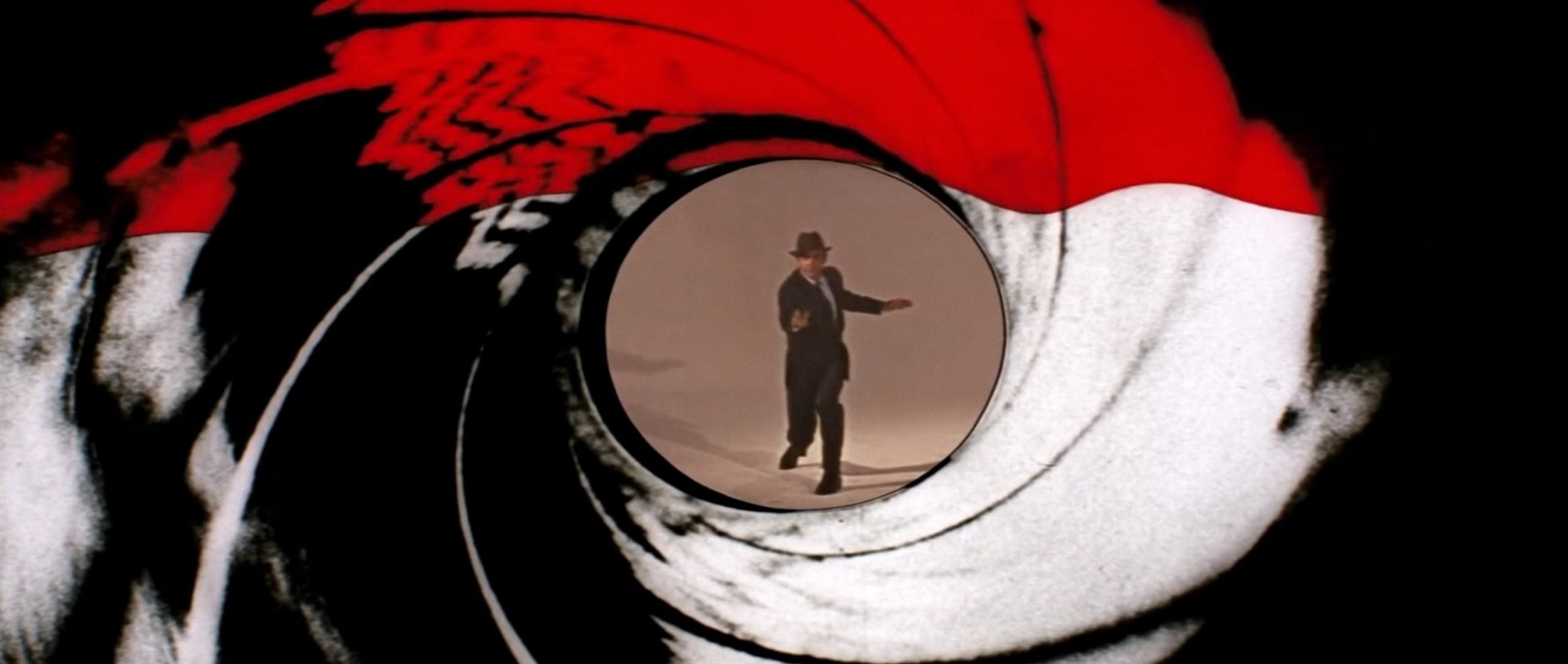
30 Fads of the 1960s: James Bond is obviously no fad, the 25th big screen adventure was released last year. But back in the ’60s, there was Beatlemania, Batmania and Bondmania (which Adam West used to refer to as as “the Three Bs”). The 007 explosion was so big that it inspired a spy craze on the big screen and the small. We got Dean Martin in a series of Matt Helm movies, James Coburn in a pair of Our Man Flint flicks and TV shows like Get Smart, The Man from U.N.C.L.E. and The Wild Wild West. And people ate it all up … until they’d had their full and moved on. On top of that, this is another chance to say goodbye to the first Mr. Bond, Sean Connery, who recently passed away.
26. Super Ball
30 Fads of the 1960s: The material making up the Super Ball was invented by chemist Norman Stringley in 1964. His intention was to sell it to his employer, the Bettis Rubber Company, but they rejected the idea. Eventually he made his way to toy company Wham-O and two years later they’d perfected the material to prevent it from falling apart (a previous problem) and introduced the Super Ball. Now here’s the thing: when bounced with enough force, it would really take off to the point where it could fly over a three-story building. Which is why they needed to come up with a package like the one below: every time you’d bounce the damn thing, it would disappear (and, yes, this has awakened a painful memory). The Super Ball is still available, but in the ’60s it was a huge sensation.
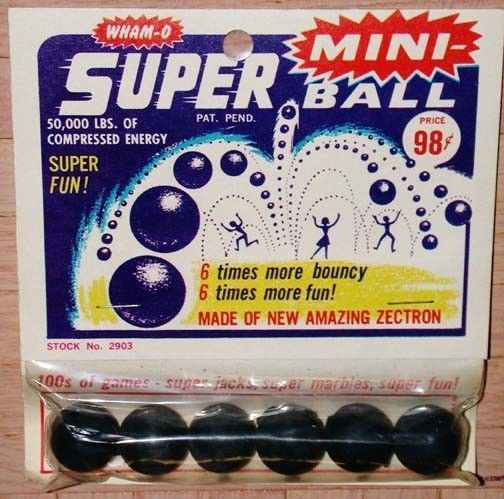
27. Tang
30 Fads of the 1960s: Created by William A. Mitchell, a scientist for General Mills, in 1957, this powdered drink mix hit the marketplace and virtually no one cared. But then it was revealed that NASA had provided it to astronaut John Glen in a 1962 Mercury flight, which led to other astronauts in the Gemini program to use it as well. Suddenly sales began to rise at an amazing rate, although this connection between the two has erroneously given people the impression that NASA actually invented it. The product is still around (though not the same without those astronauts) with half of its global sales coming from other countries. Dipping back into our personal memory, we were not fans. Neither, it seems, was astronaut Buzz Aldrin, who in 2013 proclaimed, “Tang sucks!” Not sure what they did with that endorsement.
28. Troll Dolls
30 Fads of the 1960s: These suckers were everywhere in the ’60s. We couldn’t understand it back then, and don’t get it today, but they were so popular. And their origin is actually kind of touching: Danish fisherman and woodcutter Thomas Dam in 1959 simply didn’t have the money to buy a Christmas gift for his daughter, so he carved a doll out of wood from what he was imagining. As his daughter played with her new toy in public, other kids desperately wanted their own. In response, his company, Dam Things, started to produce a line of these dolls, in plastic, under the umbrella title Good Luck Trolls. Their popularity grew in Europe and they got even bigger upon hitting the United States marketplace, becoming one of the best-selling toys between 1963 and 1965. There have been ebbs and flows in their popularity, though they have been the subject of TV shows, movies and video games. Most recently their second film, Trolls World Tour, was released.
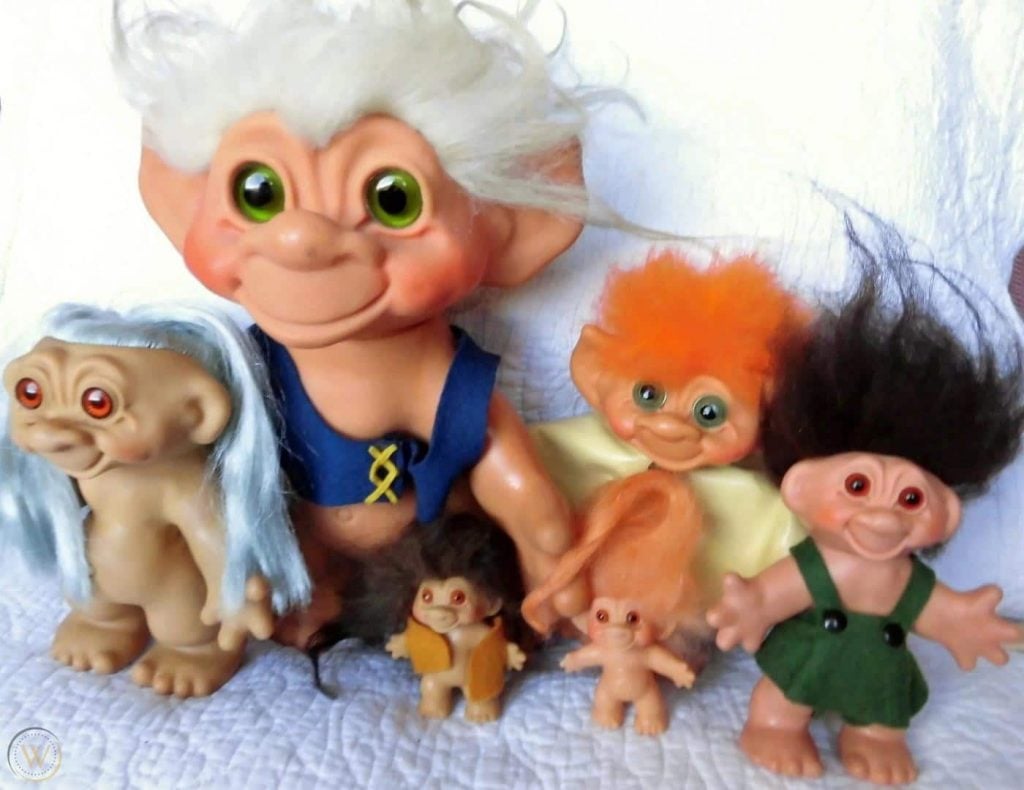
29. Twister
30 Fads of the 1960s: Seriously speaking, how many people have been sent to the hospital playing Twister over the decades? Sure, they make it look like fun, and kids are so flexible that they can survive a game relatively unscathed. But if you’re a little older and not in the greatest of shape, you run a real risk of pulling something (not that we’re talking from experience or anything). Milton Bradley introduced the game in 1966 and it was helped tremendously when actress Eva Gabor (who was starring on Green Acres at the time) along with host Johnny Carson played a game with each other on The Tonight Show. Well, that shot sales through the roof and it’s been selling ever since.
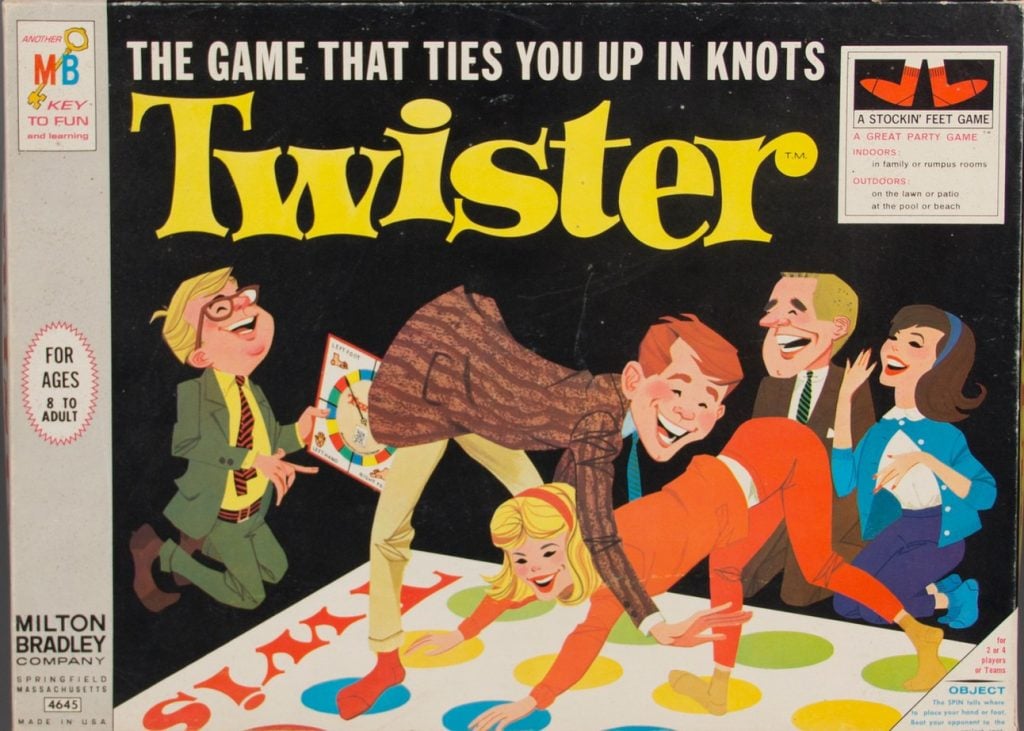
30. Yo-Yos
30 Fads of the 1960s: Yo-yos may have had great success in the 1960s, but the toy can be traced back to a Greek painting from 440 BC that features a kid playing with one. Flash forward to 1928, and a Filipino immigrant named Pedro Flores came to the United States and launched the Yo-yo Manufacturing Company in Florida. His products were an immediate hit with 300,000 units being produced every day. Then, in 1932, Donald F. Duncan took ownership of Flores’ company and he enjoyed great success, until after World War II when sales declined. A series of TV commercials in 1962 kicked things off again in a big way, but eventually — due to financial and legal issues — he sold his rights to Falmbeau, Inc., which is still producing them. Now if you’ll excuse us, there’s a whole lot of memorabilia we need to track down — the ’60s rule!
